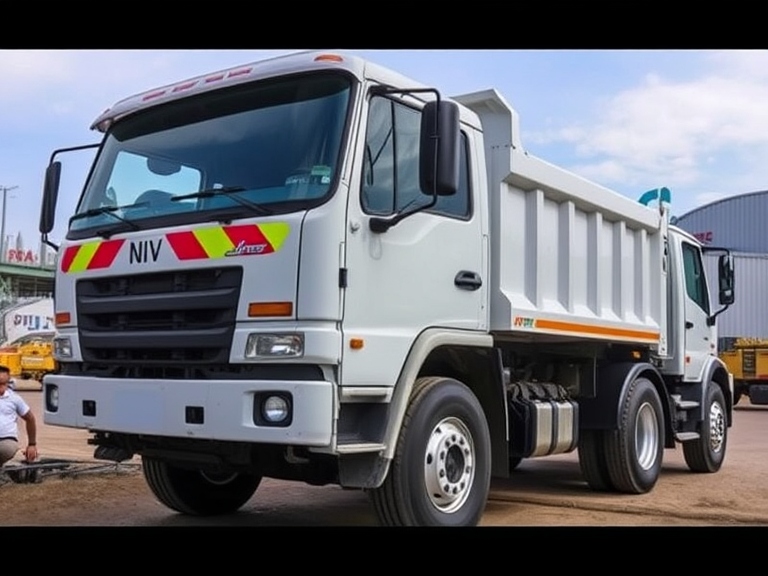Safety and stability are crucial for every dump truck operation. Wink Anti-Tip Technology offers a proactive solution to prevent tipping incidents and keep your trucks safe. Installing this advanced system can seem challenging, but with the right guidance, it becomes a straightforward process. In this guide, you’ll learn how to install Wink Anti-Tip on your dump trucks effectively.
Before you begin the installation, it’s important to prepare adequately. This includes gathering all necessary tools and materials, as well as thoroughly understanding the installation steps. Proper preparation will save you time and help you avoid common mistakes.
In this article, we’ll walk you through the entire installation process, starting with preparation, moving on to the step-by-step installation, and finishing with calibration and post-installation checks. With this guide, you can equip your dump trucks with Wink Anti-Tip Technology confidently and enhance their safety and performance.
Preparing for Installation
Preparation is key to a smooth, successful installation of Wink Anti-Tip. Start by gathering all necessary tools and reviewing the installation manual to avoid any surprises. Start by gathering all necessary tools and materials. You’ll need basic tools like wrenches, pliers, screwdrivers, and perhaps a drill. Additionally, make sure you have the Wink Anti-Tip kit, which includes sensors, the control unit, wiring harnesses, and mounting hardware.
Next, choose a suitable location for the installation. It’s best to work in a well-lit, spacious area where you can maneuver the truck and access all necessary components easily. Before starting, review the installation manual thoroughly. Familiarize yourself with the parts and steps involved. This will help you anticipate any potential challenges and ensure you understand the entire process before diving in.
Step-by-Step Installation Process
Installing the Wink Anti-Tip system involves several key steps, each crucial for ensuring the system functions correctly. Here’s a step-by-step guide to help you through the installation:
1. Mounting the Sensors: Start by choosing the best spots for mounting the tilt sensors on both sides of the truck’s frame for accurate monitoring. Typically, sensors need to be placed on both sides of the truck’s frame to monitor tilt accurately. Secure the sensors firmly using the provided mounting hardware.
2. Installing the Control Unit: Mount the control unit in a secure, dry location—either inside the cabin or on the truck frame for easy access, depending on the design. Ensure it is easily accessible for future maintenance but protected from the elements and debris.
3. Routing the Wiring Harnesses: Carefully route the wiring harnesses from sensors to the control unit, securing them away from sharp edges or moving parts. Route the wires carefully, avoiding sharp edges and moving parts that could cause damage. Use zip ties or clamps to secure the wiring in place.
4. Connecting Power Supply: Connect the control unit to the truck’s power supply, ensuring all electrical connections are secure and shielded. Ensure all electrical connections are secure and shielded to prevent short circuits or disconnections during operation.
5. Initial Testing: Power up the system and run an initial test to ensure everything is working smoothly, checking for alerts or error messages. Check for error messages or alerts from the control unit and ensure the sensors are transmitting accurate data.
By following these detailed steps, you’ll be able to install the Wink Anti-Tip system efficiently and effectively, setting the stage for proper calibration and optimal performance.
Calibrating the Wink Anti-Tip System
After successfully installing the Wink Anti-Tip system, the next crucial step is calibration. Calibration is essential to sync the sensors and control unit for accurate tilt and load readings. Begin by parking on a flat surface to set a baseline, then zero the sensors to recognize the level position. Start by parking the truck on a flat, level surface to establish a baseline for the sensors. Power on the system and follow the calibration instructions provided in the manual.
Begin by zeroing the sensors. This step establishes a reference point, allowing the system to recognize what a level truck looks like. The calibration process may involve adjusting the sensor levels manually or using the control unit to perform automated adjustments. Make sure to follow the prompts carefully and verify that the displayed levels on the control unit match the truck’s actual angle.
Next, test the system by simulating various tilt scenarios. Gently raise and lower the truck bed while monitoring the sensor readings and system responses. Confirm that the system can detect different angles accurately and prompt corrective actions when necessary. Calibration may need to be repeated to fine-tune the settings, ensuring optimal performance.
Post-Installation Checks and Driver Training
After installation and calibration, perform post-installation checks and provide driver training to maximize safety. On how to use the Wink Anti-Tip system. Start by conducting a thorough inspection of all components to ensure everything is secure and functioning correctly. Check the mounting of the sensors, control unit, and wiring harnesses, making sure there are no loose connections or potential issues.
Next, test the full range of system functions. Simulate tipping conditions and observe how the system reacts. Verify that driver alerts are working and that the automatic bed lowering feature activates as expected. It’s important to confirm that the system performs reliably under different conditions before putting the truck back into regular service.
Training drivers is an essential part of the post-installation process. Educate them on how the Wink Anti-Tip system works and its benefits. Provide a walkthrough of the control unit, explaining how to interpret different alerts and what actions to take when they occur. Emphasize the importance of regularly checking the system and reporting any issues immediately.
Final Thoughts
Installing the Wink Anti-Tip anti-tip over device on your dump trucks is a wise investment in safety and efficiency. By following this comprehensive guide, you can ensure a smooth installation, accurate calibration, and thorough post-installation checks. Proper driver training further enhances the benefits of this advanced technology, ensuring that your fleet operates safely and effectively.
Taking these steps not only helps prevent tipping incidents but also extends the life of your trucks and reduces downtime. For more information on how Wink Anti-Tip can enhance your fleet, visit Wink Anti-Tip and explore our solutions today.





